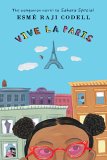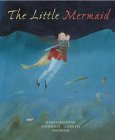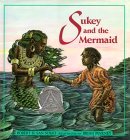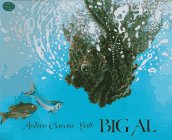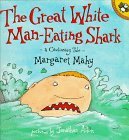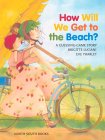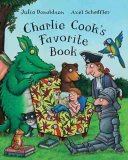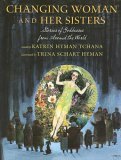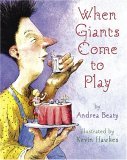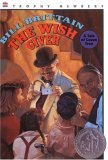Today we continue our week's worth of seaside fun by playing in the sand!

 Seaside Scavenger Hunt
Seaside Scavenger Hunt
After reading PLATYPUS by Chris Riddell (Harcourt), in which our little hero goes beachcombing to find just the right addition to his collection, go on a scavenger hunt for items like a rock with a fossil on it, a bird feather, a shovel, a shell no bigger than a fingernail, or, any of the items from my very favorite piece of summery non-fiction, THE BEACH PATROL by John O'Brien and Max Bilkins (Henry Holt) (also a great choice for aspiring lifeguards ages 6 and up). If you're at home scavenging, try things like a slotted spoon, a penny from 1974, a book with a title starting with the letter B, or a yellow ponytail holder.
 Also of interest:
Also of interest:
BEACH DAY by Karen Roosa, illustrated by Maggie Smith (Clarion) (3 and up)
ALL YOU NEED FOR A BEACH by Alice Schertle, illustrated by Barbara Lavallee (Silver Whistle)(3 and up)
UMBRELLA PARTY by Janet Louise Swoboda Lunn, illustrated by Kady MacDonald Denton (Groundwood) (4 and up)
LOTTIE'S NEW BEACH TOWEL by Petra Mathers (Atheneum) (5 and up)
 Castles in the Sand...and in the Jar
Castles in the Sand...and in the Jar
After reading SAND CASTLE by Brenda S. Yee, illustrated by Thea Kliros (Greenwillow) or SUPER SAND CASTLE SATURDAY by Stuart Murphy, illustrated by Julia Gorton (HarperTrophy), children can create their own sand art using craft sand, available through Oriental Trading Company (
search keyword "sand") and craft stores. Using empty baby food jars or other clear containers, children can layer the colored sand to make beautiful sunset-like creations. If you have extra jars, you can make an "ocean in a bottle" by filling the jar halfway with water, adding blue food coloring, and filling it almost to the top with vegetable oil or mineral oil. After screwing the lid on tightly, move the jar back and forth to see the waves! If this floats your boat, there are tons of simple and delightful science activity tie-ins at Perpetualpreschool.com. Another fun sand activity is sand painting, instructions courtesy of one of my all-time favorite links, Thebestkidsbooksite.com.
Beach Ball Book Call
Play a literary game of toss: whoever catches the ball calls out the name of a book, and then throws it to someone else, who has to either name that book and another book, or the name of the author or illustrator that matches the book that was last called. Example: "The Hobbit!" (throws ball)
"The Hobbit, Judy Moody Saves the World!" (throws ball)
"The Hobbit, Judy Moody Saves the World, Captain Underpants!" (throws ball)
"The Hobbit, Judy Moody Saves the World, Captain Underpants, Dav Pilkey!" (throws ball)
"Tales of a Fourth Grade Nothing!" Since someone named the author of Captain Underpants, the list starts anew. How long can the list grow? How many authors or illustrators do the children know? You can also try to call out all books by one author; how many of Dr. Seuss's books can the children name? Lemony Snicket's? Beverly Cleary's?
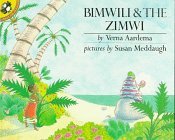 Beach Mancala
Beach Mancala
Mancala is an ancient game from Africa that is fun and easy to play on the beach using clamshells or small stones, and digging the "playing board" into the sand, using shells or stones as pieces, or by making your own board at home; they are also available relatively inexpensively at toy stores. Rules for playing mancala may be found here or here. Once you know how, it's absolutely addictive; you'll never play checkers again! You may want to include a reading from Verna Aardema's retelling of the African folktale set at the beach, BIMWILI AND THE ZIMWI (Penguin) (which may be a bit scary for younger children, but suspenseful for some; read it yourself and decide!). In the brilliant storytime resource book I'M A LITTLE TEAPOT! by Jane Cobb (Black Sheep Press), the author suggests taking a conch shell after reading Bimwili and letting all the children listen to it, and then using the story as a springboard for examining all different kinds of shells (a great chance to incorporate guide books!).
Footprint in the Sand Bookmark
For a keepsake of this sunny, funny day, let each child trace a foot on a piece of thin sandpaper (available in sheets or rolls at hardware and home improvement stores) and cut it out. Punch a hole and tie on some raffia and a seashell with a hole in it to complete a beachy bookmark!
Links are provided for informational use. Don't forget to support your local bookseller.

 And if you're not tired out by laughing and want another round with this author, check out BAD KITTY (Roaring Brook). Oh dear, did Mommy forget to buy food for the kitty? No worries, there should be plenty of things in the cupboard for kitty to eat. Asparagus, perhaps? Fennel? Rhubarb? An alphabet of food that sends kitty gagging on hairballs also sends him into an alphabet of bad behavior involving curtains, neckties and a vet's arm. Don't worry, a trip to the store for more suitable cuisine, worthy of Wacky Packages noteriety and a child's taste (lizard lasagne or turtle turnovers, anyone?) should send kitty into a redemptive fervor. That's four, count 'em, four hilarious alphabets in one book. Zany, never dull, and full of a suprising amount of fresh vocabulary and a chance for letter recognition, this book is a hoot for lively, irreverent preschoolers and their older siblings. It reads like catnip for fans of all things feline, but cat-haters can enjoy it, too, as kitty's true nature is revealed. (4 and up)
And if you're not tired out by laughing and want another round with this author, check out BAD KITTY (Roaring Brook). Oh dear, did Mommy forget to buy food for the kitty? No worries, there should be plenty of things in the cupboard for kitty to eat. Asparagus, perhaps? Fennel? Rhubarb? An alphabet of food that sends kitty gagging on hairballs also sends him into an alphabet of bad behavior involving curtains, neckties and a vet's arm. Don't worry, a trip to the store for more suitable cuisine, worthy of Wacky Packages noteriety and a child's taste (lizard lasagne or turtle turnovers, anyone?) should send kitty into a redemptive fervor. That's four, count 'em, four hilarious alphabets in one book. Zany, never dull, and full of a suprising amount of fresh vocabulary and a chance for letter recognition, this book is a hoot for lively, irreverent preschoolers and their older siblings. It reads like catnip for fans of all things feline, but cat-haters can enjoy it, too, as kitty's true nature is revealed. (4 and up)





